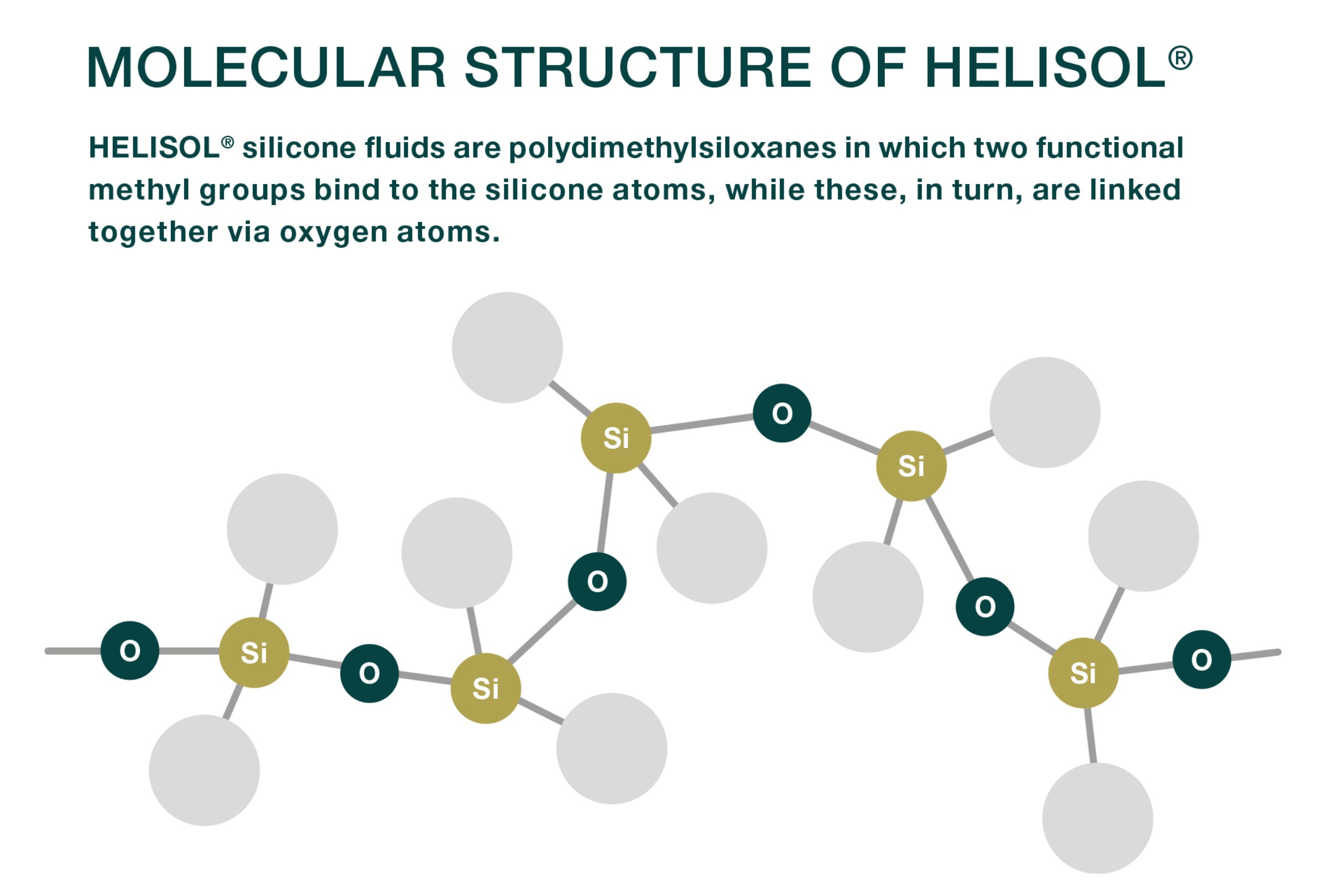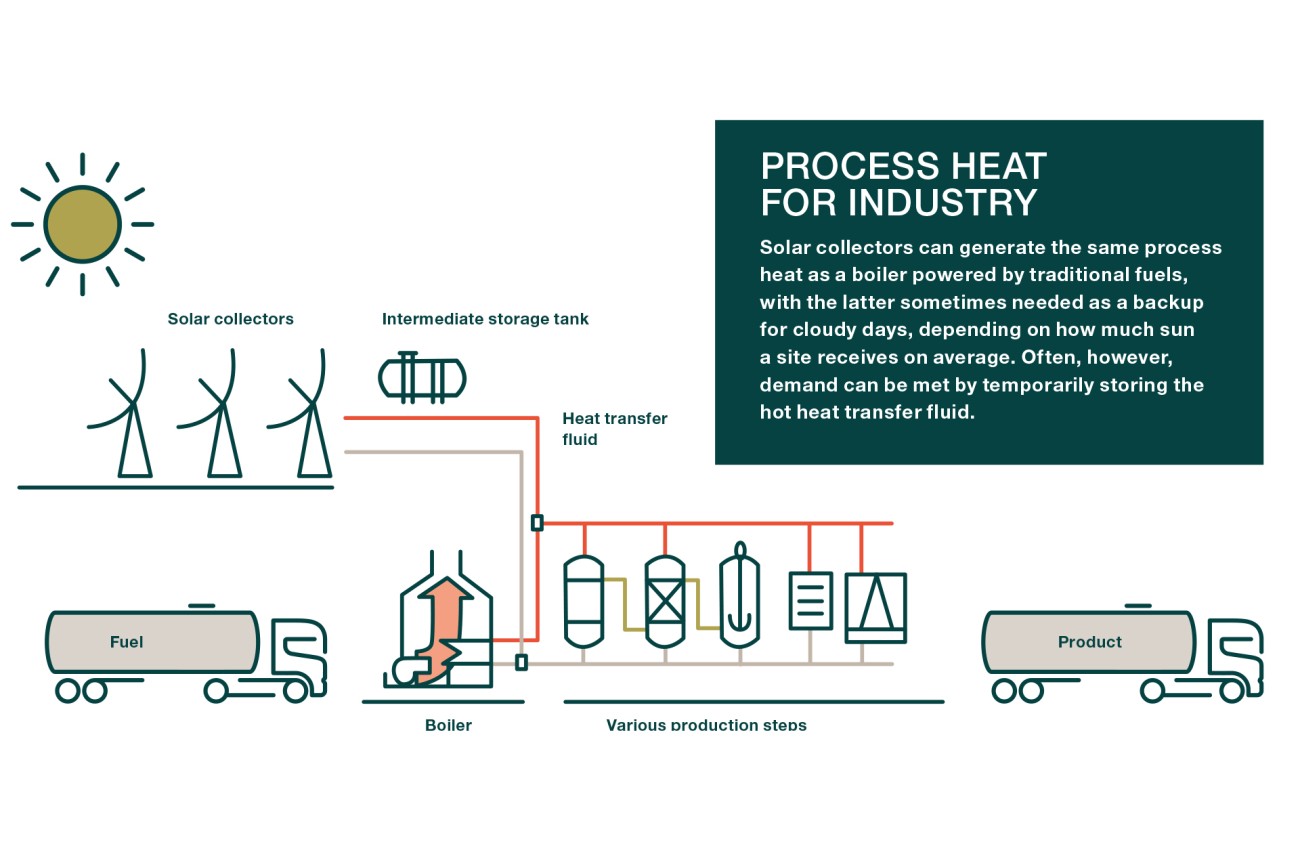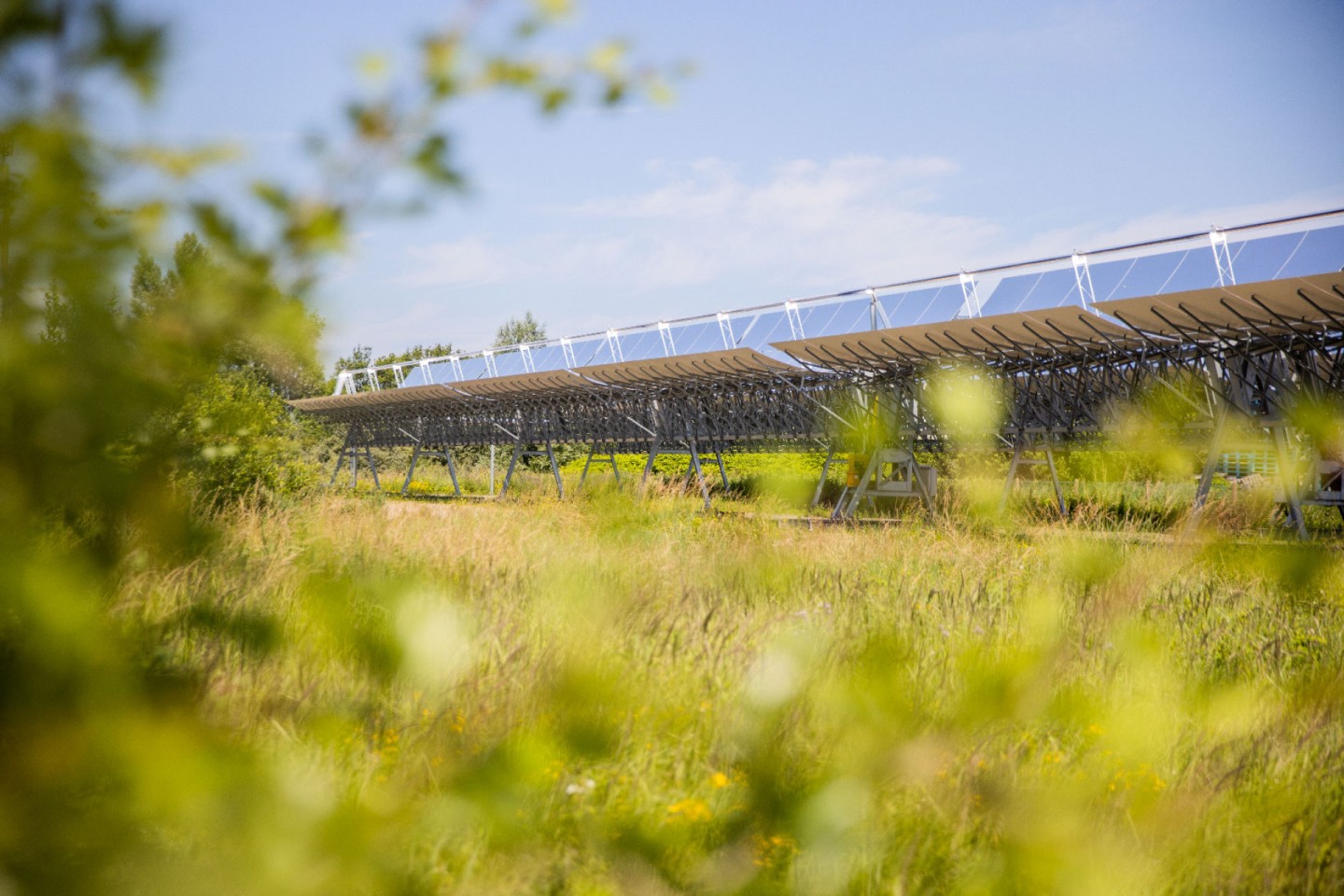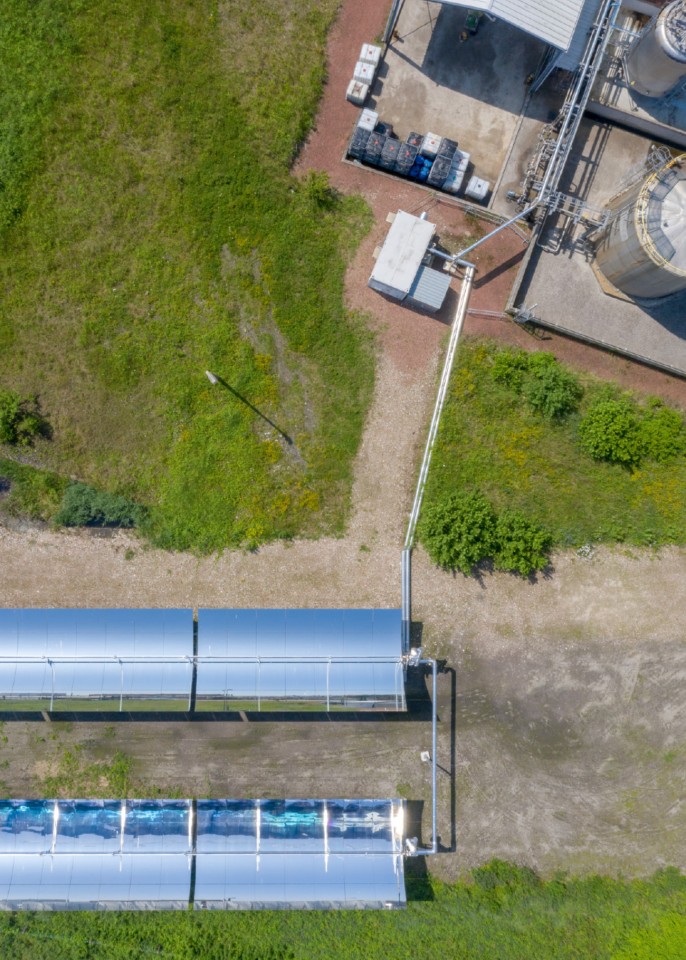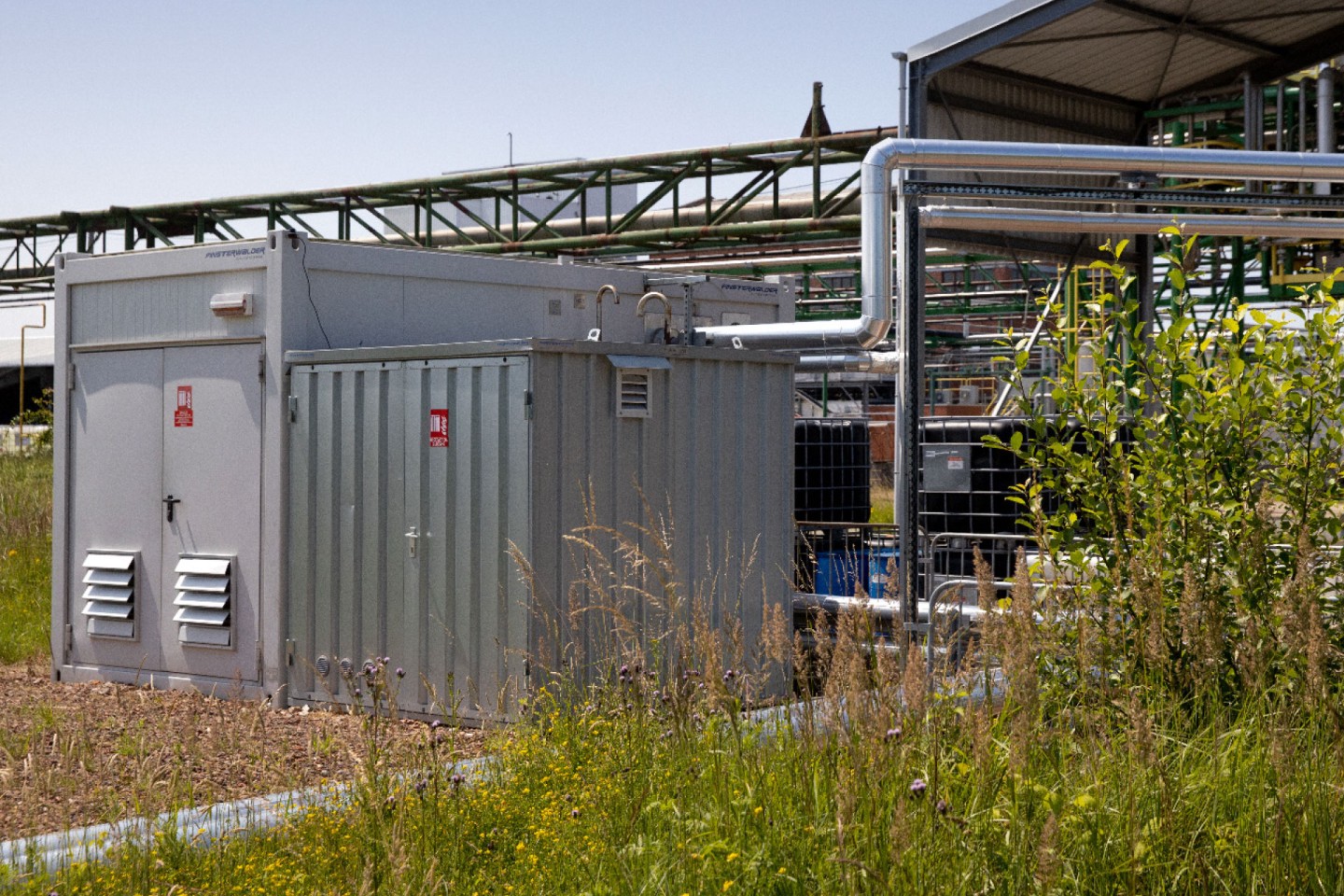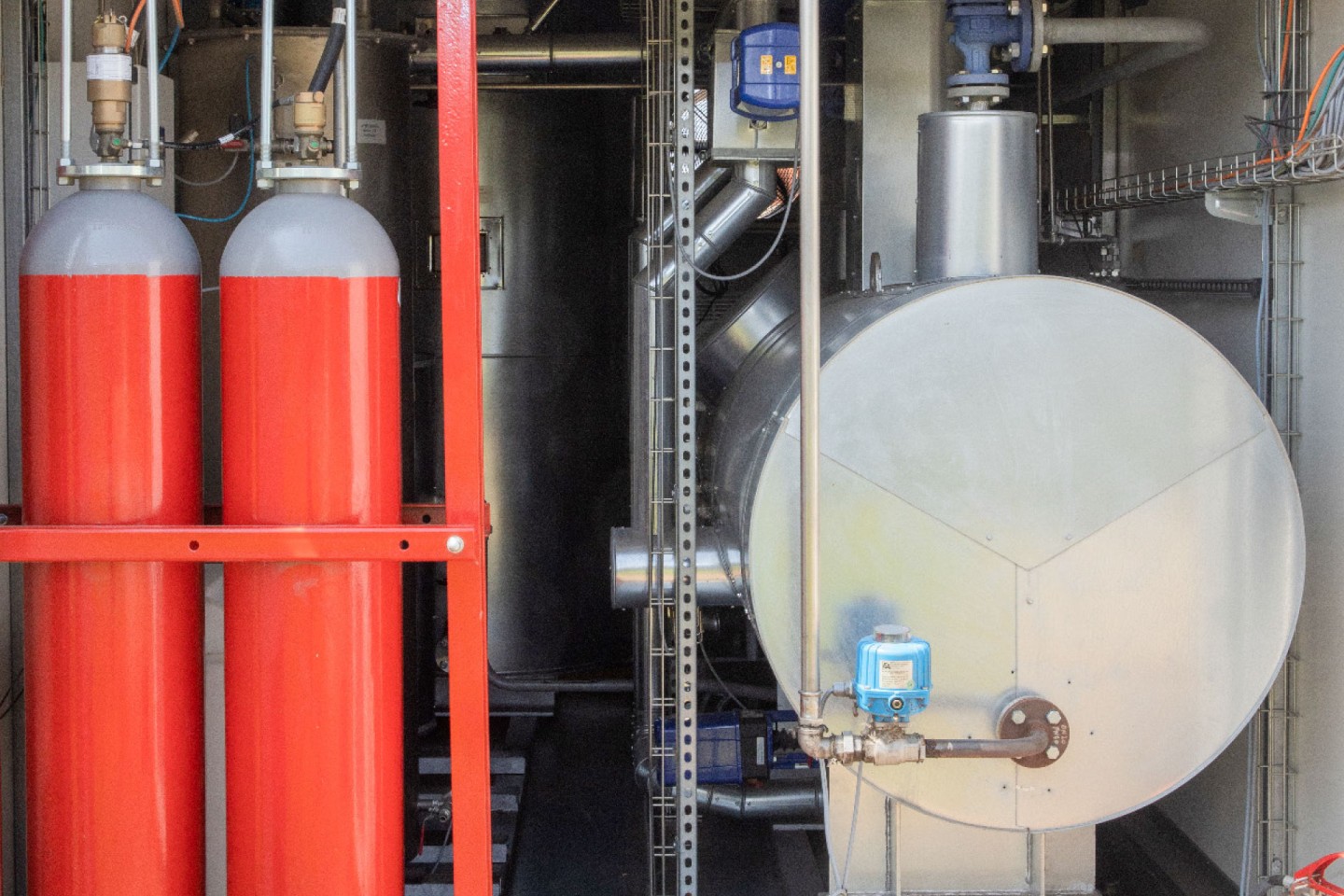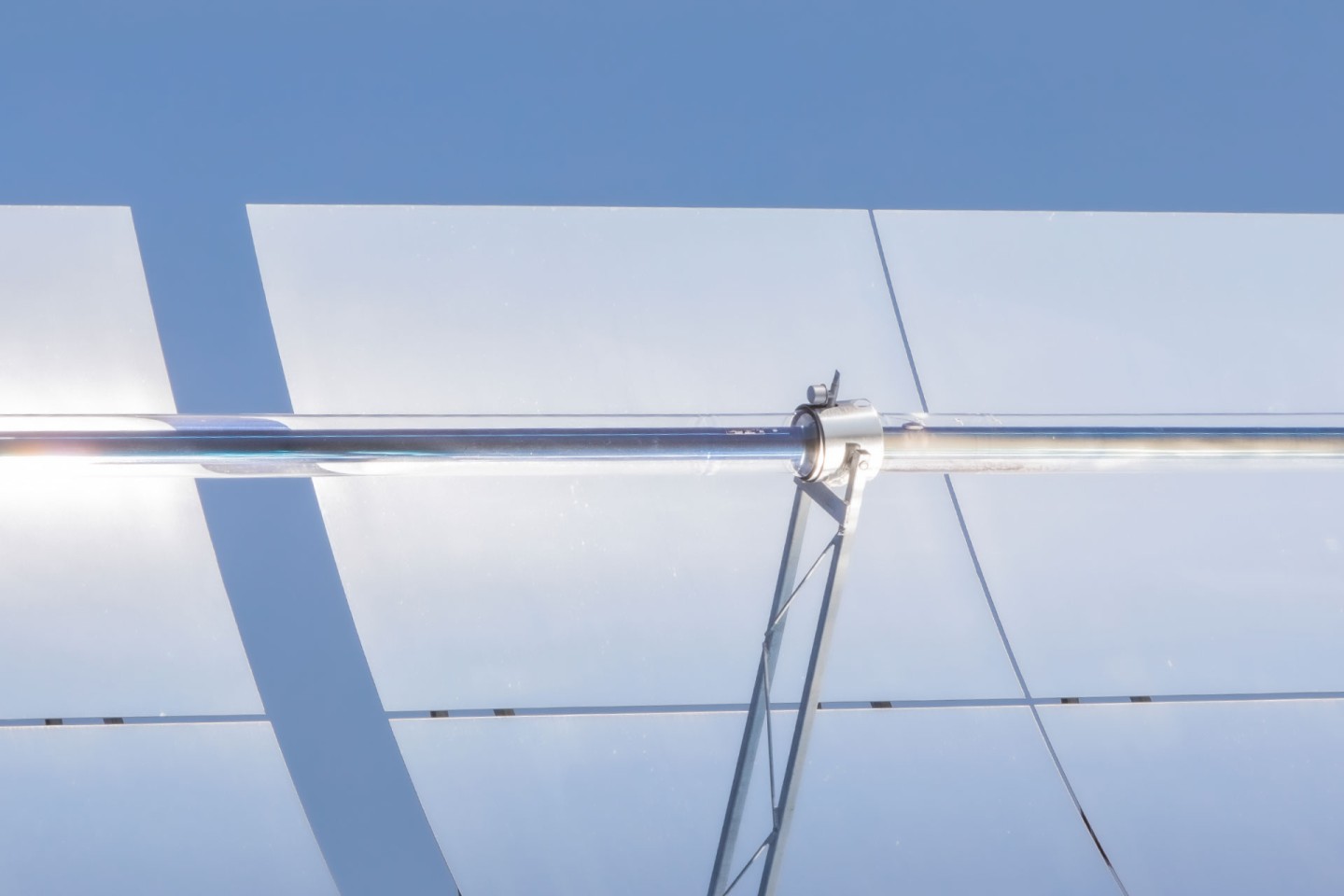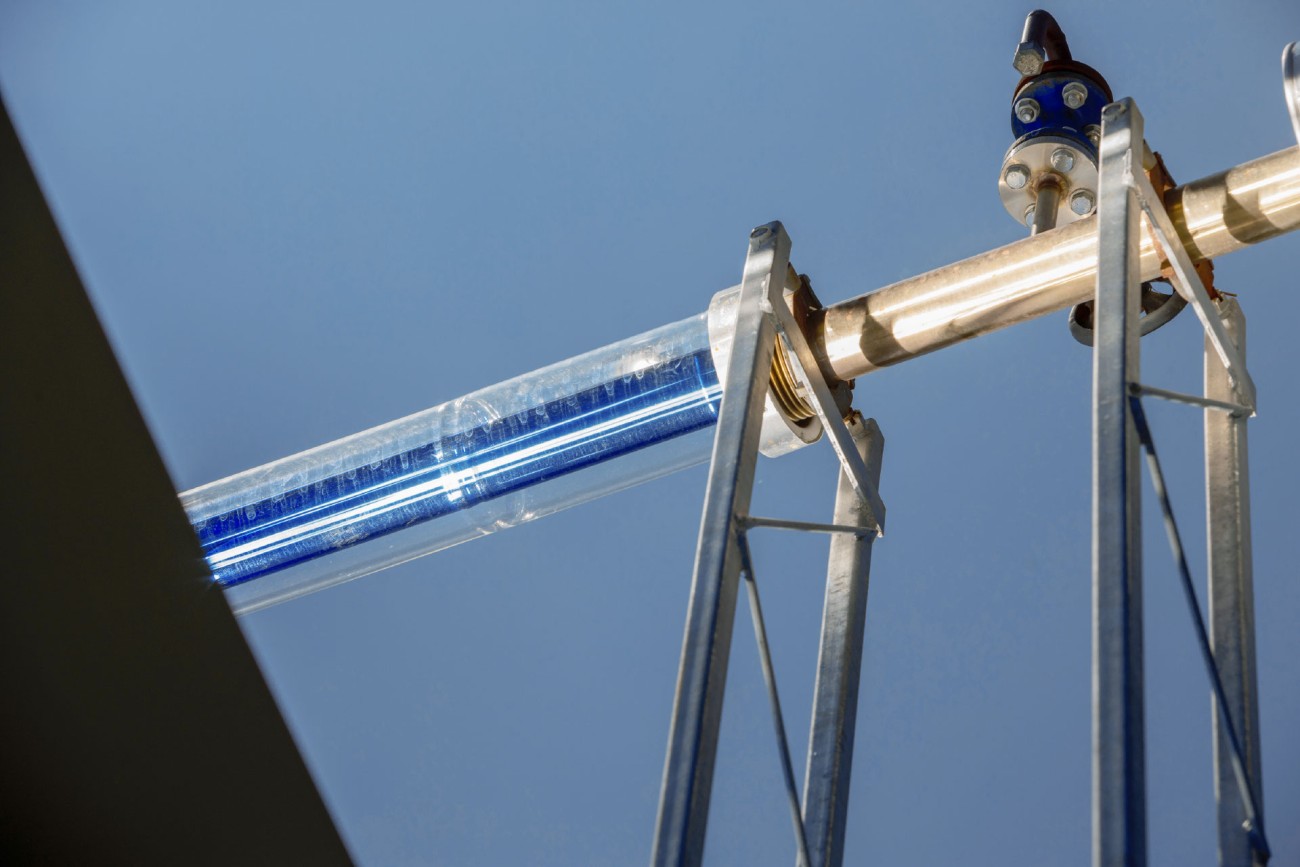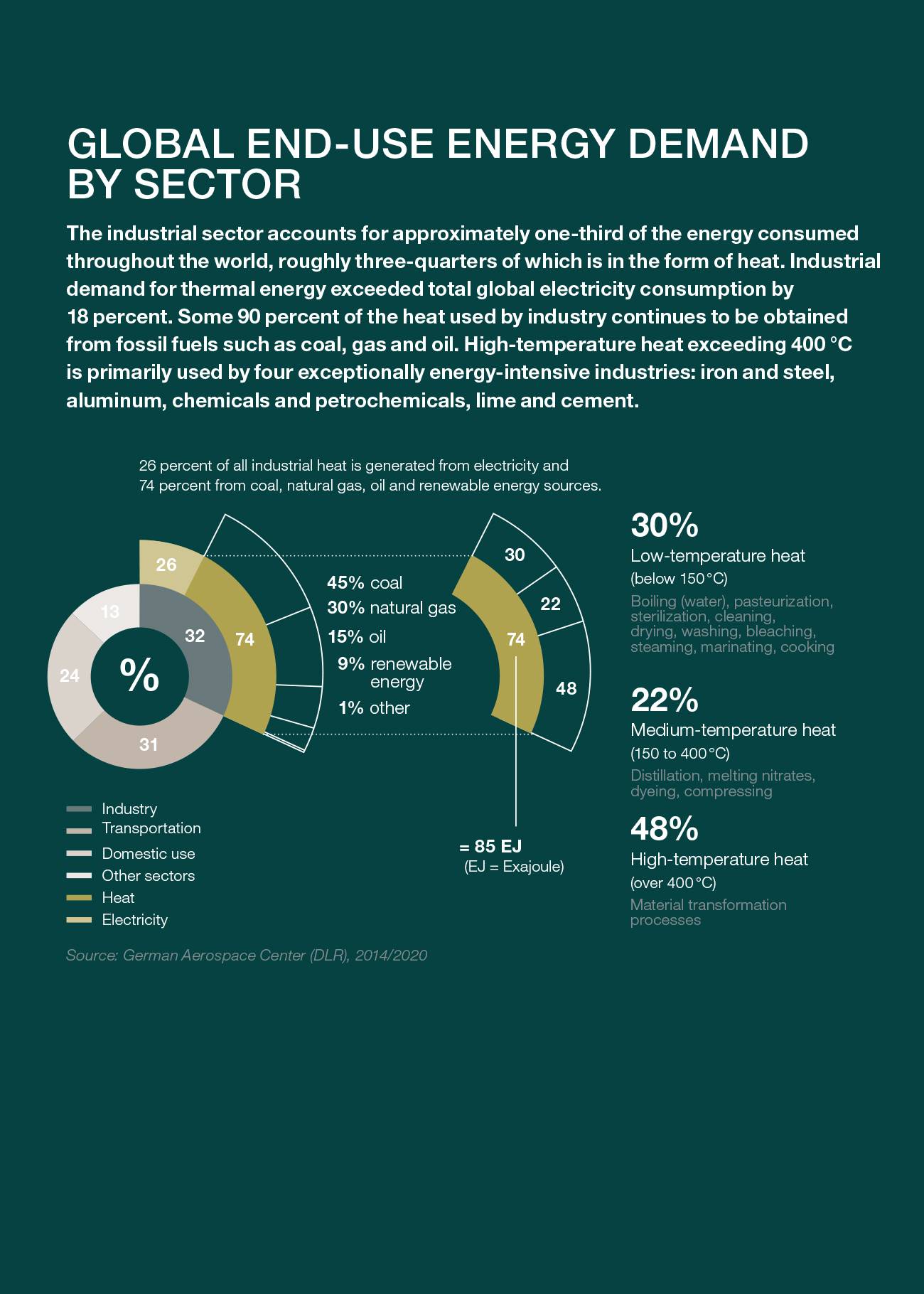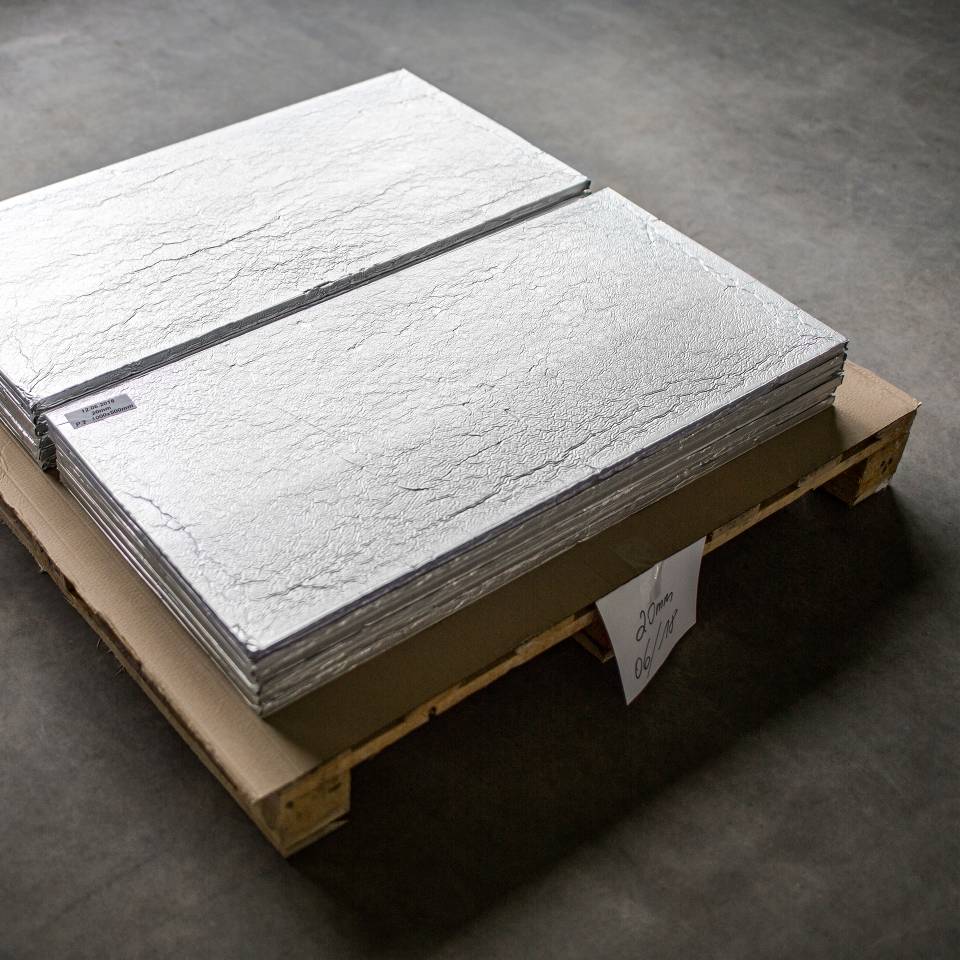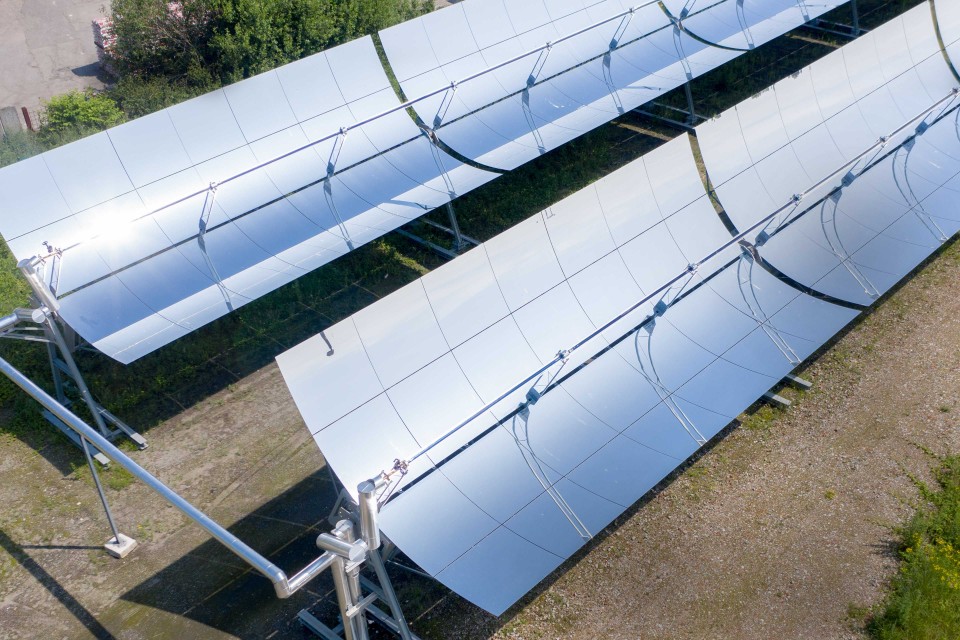
The best possible use of solar energy
Aug 31, 2021 Read time: approx. MinutesMinute
The Sun Is Heating Things Up in Industry
When used in solar thermal energy plants, high-performance heat transfer fluids like HELISOL® from WACKER play an important role in protecting the climate. The solar energy captured does more than just generate electricity – it can also be used directly as process heat for industry. Two model projects in Belgium show how it’s done.
These sun worshipers don’t need any UV protection. The parabolic mirrors of the solar thermal energy plant stretch their silver bodies heavenward, serenely reaching out to the dazzling light and capturing its energy. “And with a conversion efficiency of over 75 percent, they’re very good at it too,” explains Dr. Joachim Krüger, CEO of Solarlite CSP Technology GmbH, a wholly owned subsidiary of Belgium-based AZTEQ. Headquartered in the German state of Mecklenburg-West Pomerania, the company develops and builds decentralized solar thermal parabolic trough plants that generate electricity or process heat for industrial use.

The Sun Is Heating Things Up in Industry
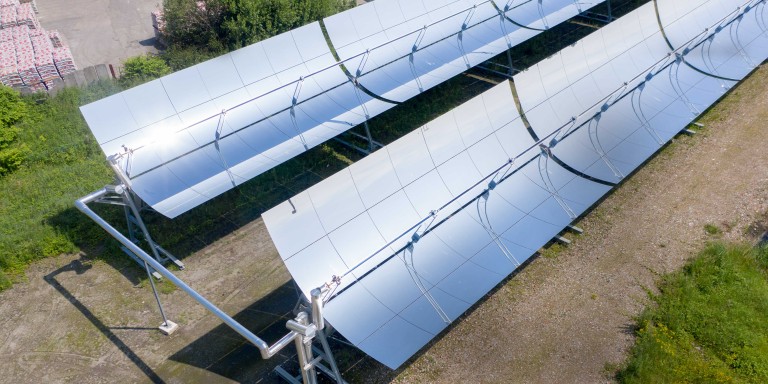
In order to make the best possible use of solar energy, the parabolic mirrors automatically track the movement of the sun. Their curved surfaces focus the light on absorber tubes, also known as receivers, which are mounted lengthwise above the surface of the mirrors. The tubes are made of steel and encased in a glass envelope. Between these layers is a vacuum, which prevents heat losses.
“Heat is much, much easier to store than electricity. That’s why solar thermal energy plants can produce heat or electricity at night too.”
Dr. Joachim Krüger, CEO of Solarlite
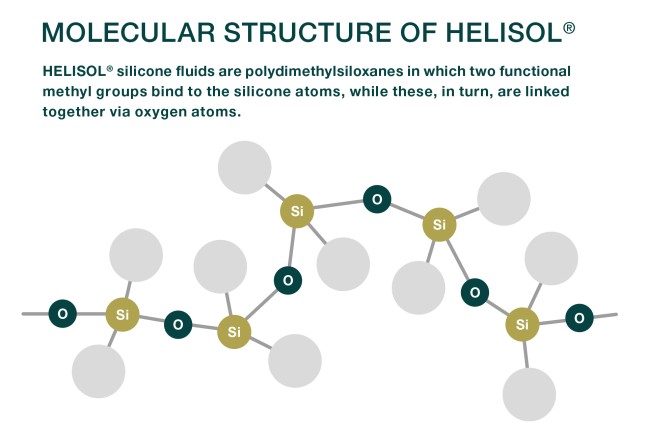
Flowing through the steel tubes of a solar thermal energy plant – also known as a concentrated solar power (CSP) plant – is a substance that is crucial for harnessing the sunlight: the heat transfer fluid. That fluid could be water, an organic oil or HELISOL®, a silicone fluid developed at WACKER specifically for these applications.
“Every fluid has its advantages and disadvantages, but its job is always the same: to absorb and relay the sun's thermal energy,” explains Erich Schaffer, who heads up the Heat Transfer Fluids project at WACKER SILICONES. The heat transfer fluid flows out of the solar field into a heat exchanger in which water is then heated. This generates steam that can be used to drive a turbine to produce electricity. Once cooled, the steam then flows back into the heat exchanger – and the cycle can start all over again. In an alternative scenario, the captured solar energy can also be used directly for process heat in industrial applications – completely bypassing the electricity-generation step.
Using water as a heat transfer fluid has the advantage of being absolutely harmless from an environmental perspective. The disadvantage is that heating it generates extremely high pressures of over 200 bar. The plant would have to be constructed accordingly, making its design more complex. The plant's design would also have to be modified to prevent the water in the receiver tubes from freezing. Similar considerations apply to other heat transfer fluids as well.
A Liquid Even in Bitter Cold
“Even most organic oils will solidify at roughly 10 degrees Celsius, which means that solar thermal energy plants have to be equipped with what is known as trace heating in order to keep the oil in liquid form,” explains Dr. Kai Schickedanz, technical manager for Heat Transfer Fluids at WACKER. “Our HELISOL® silicone fluids, by contrast, are still liquids at temperatures as low as minus 40 degrees Celsius.” Silicone fluids also have advantages at the other end of the temperature spectrum, as they can be heated to as high as 425 degrees Celsius – without breaking down. No hydrocarbon-based heat transfer fluid can compete with that.
For Solarlite’s Dr. Krüger, the advantage of that extremely broad range of temperatures is most apparent when silicone fluid is used for operating solar thermal energy plants: “When you use silicone fluid as a heat transfer medium,” the Solarlite CEO points out, “a CSP plant will work reliably through the European winter or in desert regions, where the nights can be very cold too. Plus, the investment costs are lower since you don’t need any trace heating.”
In addition to running his own company, Dr. Krüger also chairs the German Association for Concentrated Solar Power (DCSP), so he is familiar with the critical questions that solar thermal energy plants are often subjected to. Especially this one: So first you generate heat and then convert that to electrical energy. Why go through all those steps when photovoltaic technology already offers an alternative method that produces electricity directly?
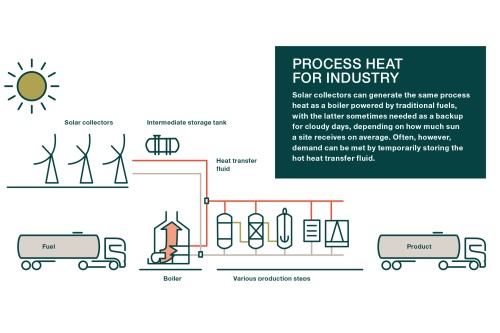
The two methods for harnessing renewable energy – solar thermal energy and photovoltaics – are not in competition, however. They also complement each other. “Heat is just easier to store than electricity,” Krüger observes. “That’s why solar thermal energy plants can produce electricity at night, bridging the hours when the sun isn’t shining and solar farms can’t generate electricity.” Molten salt – one example of a material that can store heat – reaches a temperature of roughly 400 degrees Celsius when it absorbs the energy from a heat transfer fluid that has been heated by the sun. At night, heat exchangers extract this stored energy and feed it into the power plant, where it is used for producing electricity. According to a recent study on solar thermal energy plants performed by the German Aerospace Center (DLR), large liquid salt tanks are 80 to 90 percent more cost-effective than batteries as a means of storing electricity. This makes the energy generated from the sun more flexible and allows it to be adapted to electricity demand.
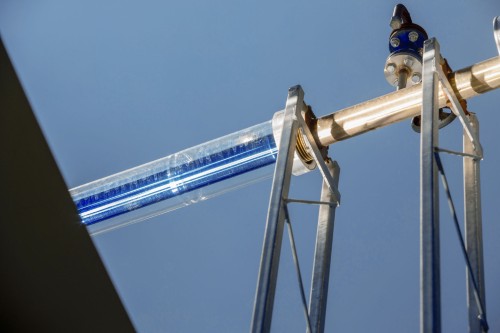
Absorber tubes in a solar thermal power plant: heat transfer fluid flows through these black steel tubes, which are encased in glass. In order to prevent heat loss, the 400 °C tubes are surrounded by a vacuum.
A Replacement for Fossil Fuels
Solar thermal energy can do more than simply provide round-the-clock electricity in CSP plants, according to Schaffer. As the WACKER engineer explains, “The primary product of a solar thermal energy plant is heat. And there are a variety of applications where demand for that is high, like heat for buildings or process heat for industry.” And in the case of the latter, the quantities are huge: the industrial sector as a whole accounts for roughly one-third of the world’s total energy consumption, some three-quarters of which is in the form of heat. Temperatures of up to 400 degrees Celsius constitute roughly half of global industry’s demand for heat. As Krüger explains, the lion’s share of this is met through fossil fuels such as natural gas – less than 10 percent is obtained from renewable resources. The solar thermal energy expert concludes that CSP plants could make a meaningful contribution to green heating.
Based in Antwerp, Belgium, ADPO is a chemical logistics company that has already recognized this and invested in a Solarlite solar thermal energy plant to provide heat for its steam generation. “It’s the very first CSP park of any kind in Europe’s chemical processing industry,” stresses Yuvaraj Pandian, a solar analyst with Solarlite. The 1,100-square-meter facility is capable of supplying 500 kWth of heat, and the company uses the resulting 152 °C steam to regulate the temperature of one of the largest logistical centers for chemical products – a strategy that eliminates 100 metric tons of carbon dioxide emissions annually. At the same time, the demo project shows that heating systems of this kind work not just in the Sahara, but also along the decidedly cool North Sea, where they offer added value for relatively small industrial facilities.
And HELISOL® flowing through the receiver tubes is part of that equation. WACKER’s Schickedanz and Schaffer are in agreement: “For us, the joint project with Solarlite at ADPO in Antwerp, along with another comparable CSP plant for Proviron Functional Chemicals NV – a company with sustainability in its DNA – in Ostend, Belgium, has been a terrific reference project for future uses of our silicone fluids in solar thermal energy applications.”
WACKER began developing HELISOL® ten years ago with the aim of allowing solar thermal energy plants or industrial systems to operate at relatively high temperatures of over 400 degrees Celsius. The company quickly found a suitable silicone fluid, but determining its parameters under operating conditions – even just measuring viscosity, for instance, at such high temperatures and at a pressure of 30 bar – posed a real challenge. “Since barely any measuring devices exist for these conditions, we quickly launched a federally funded project with specialists from the German Aerospace Center (DLR) and other cooperation partners,” Schaffer recalls.
The Perfect Duo
The parameters of the silicone fluid are crucial, as its vapor pressure or its viscosity, for example, would have an impact on the design and the properties of the tubes, which, in turn, would affect the entire plant. The design and the materials used for building and operating the plant must be in perfect synch.
Plus, the experts at WACKER had to rule out the possibility of the silicone fluid undergoing thermal decomposition or causing corrosion. “One of the disadvantages of organic oils, for instance, is that they release hydrogen over time, which then diffuses through the steel tubes,” notes Solarlite’s Pandian. “That compromises the vacuum between the steel tube and the glass envelope, which then results in unwanted heat loss.” HELISOL® considerably reduces the magnitude of that effect.
The three HELISOL® product grades had their practical skills put to the test in the demonstration loop of a solar thermal energy plant at the Plataforma Solar de Almería (PSA), a solar energy research station in sunny Spain. Here WACKER works closely with the DLR and Spain’s energy research agency CIEMAT (Centro de Investigaciones Energéticas, Medioambientales y Tecnológicas), which also operate the demonstration plant. “The mirrors in parabolic trough plants track the sun, which means that there are movable parts affecting the inlet and outlet lines,” Schickedanz explains. In other words, the seals have to be designed to prevent leaks at high temperatures, when the viscosity of the fluid is correspondingly low.


A Wide Range of Applications
Operators have to be able to pump the fluid as well – after all, HELISOL® also needs to be suitable for large plants with a 100-kilometer piping network. “Our silicone fluid successfully addresses a wide range of applications,” Schaffer observes.
To that, Dr. Krüger adds, “On the whole, the possible uses of concentrated solar power are still dramatically underestimated. Its potential within the framework of decarbonization is enormous when you think about coupling CSP with photovoltaic systems, for example.” The Solarlite expert is also confident that solar thermal energy “offers tremendous potential for producing green hydrogen via high-temperature electrolysis.”
Mr. Dr. Kai Schickedanz
Leiter Technisches Marketing Heat Transfer Fluids
WACKER SILICONES
+49 8677 83-87694
kai.schickedanz@wacker.com


